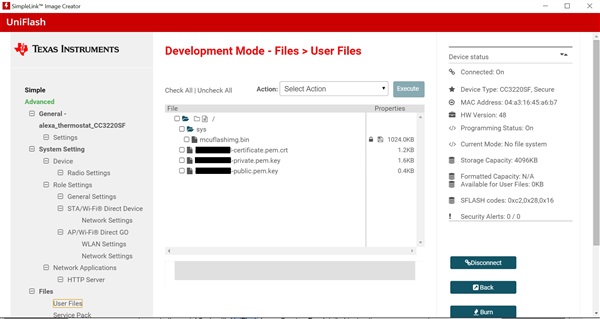Other Parts Discussed in Thread: UNIFLASH
Hi,
I am following the guide to setup Alexa and I am at page 31 copying the ARN from Lambda to Smart Home Default Endpoint. I am getting this error below. Also the document guide can not be followed as is due to some minor changes, but I managed to reach the last part. How do I solve this problem?>
Invalid Lambda ARN arn:aws:lambda:ap-northeast-1:xxxxxxxxxxxx:function:thermostat_function for FE region. Please provide a valid ARN in the form 'arn:aws:lambda:us-west-2:000000000000:function:myFunction:myFunctionVersion'.
-kel


